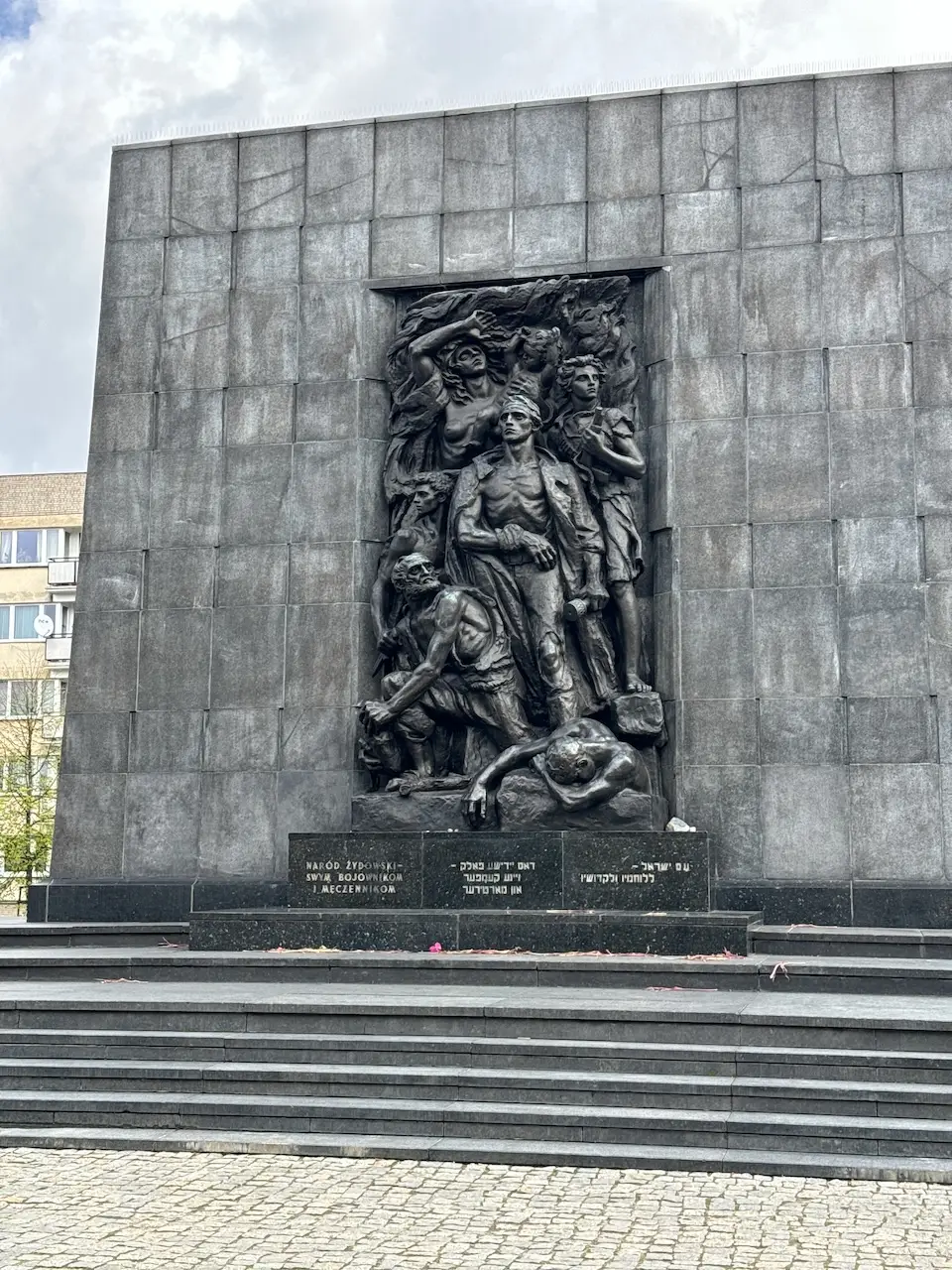It was a beautiful day in Warsaw. We started with breakfast at the hotel, where we met Curtis and Linda. We then boarded a bus for a guided tour of Warsaw, including many of the government, historical and political sites, the Jewish Quarter, and the Warsaw Ghetto area. This city was virtually leveled in World War II, but not by aerial bombing. Most of the damage was done in direct combat against the Soviets and the Germans. After the war, Warsaw was under Communist rule, and the buildings were replaced in the Russian style, including the Communist block housing. Once they were able to re-establish a democracy (1989), the Poles rebuilt the city to match the buildings that were destroyed. (Even replacing the original streets.) All the buildings are relatively new but match what they would have looked like before the war. Warsaw is still recovering from the wounds of communism. In defiance, they have renamed the street in front of the Russian Embassy “Aleją Ofiar Rosyjskiej Agresji,” which means “Victims of Russian Aggression Avenue.”
It’s no surprise St. Pope John Paul II is a big deal in Poland. There are statues, monuments and memorials everywhere. The guide explained what he meant to the Polish people. It was his visit to Warsaw in 1979 that inspired the Polish people to reclaim their heritage, their cities, their country and their faith. It would take another ten years before the fall of Communism in this region. The exact location (in Victory Square) of St. John Paul II’s homily is marked by a large white cross and is directly across the street from our hotel.
The Jewish Quarter and Ghetto area contain many monuments not only to the Jewish uprisings and victims but also to give a glimpse of what the Jewish community was like before the German occupation. In 1940, there were 300,000 Jews locked in the Warsaw Ghetto. They were sustained by only an average of 170 calories per day. There are less than 1,000 Jews left in Warsaw today. More than 30% of the Polish Jews died in the Ghettos during World War II. Just like the rest of the city, there are few buildings or markers that remain. But the ones that do have significant meaning, including the execution wall, which is riddled with bullet holes. While we were at the Jewish Museum, I bought my first Mezuzah. (Deuteronomy 6:4-9 and Numbers 12: 37-41) For my Catholic friends, listen to Fr. Mike’s Bible In A Year, Day 57. This acquisition was one of my primary goals for this trip. It’s so cool!
We ate lunch (including pierogi) in the bustling city center of Old Town. Many people were out today (Saturday), but they closed the streets to vehicle traffic, so getting around is still manageable. Walking back to the hotel, we saw a church with an Epiphany blessing (like our house) and the guard changing at the Tomb of the Unknown Soldier.
Leroy and I attended Mass at Holy Cross Church on Saturday night, our usual Mass time. We realized (during Mass) that it was not the Sunday readings. We were at the last daily Mass. Afterward, we walked down the street to the other church where Mass was beginning, but it too was daily Mass. So, we’ll get up early tomorrow morning and go to 6:00 am Mass before boarding the bus at 7:45 am to head to Krakow. (Prayers today and more to come tomorrow.)
There are so many things I could tell you, but I would spend all night writing (and I need some sleep.). So, I’ve decided to list just some of my observations.
- The Polish people we’ve encountered are rather shy. The wait staff and hotel employees are efficient, accommodating, and polite, but they are almost embarrassed if you compliment or give them much attention. (Like asking questions, which I always Ike to do when I travel.) When the waitress today asked me if I wanted the pierogi boiled or fried, I asked her what her preference and she almost fainted.
- The Polish people do not walk around with cell phones in their faces like we see at home. I can’t remember seeing anyone on the streets using a cell phone—even teenagers. We’ve seen many groups of 20-somethings gathering in groups of 6-10 (male and female), and no one is on their phone. They talk to each other (and listen) like we did in the old days.
It’s been fun checking in with the kids each day. Jameson keeps his globe nearby and always knows what time it is in Poland.











